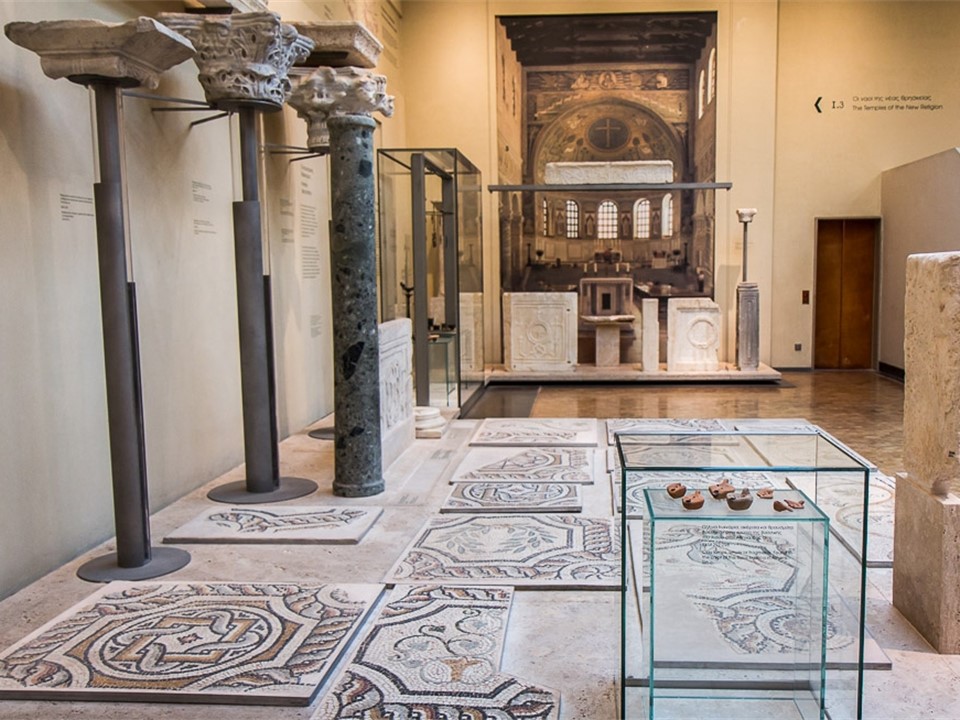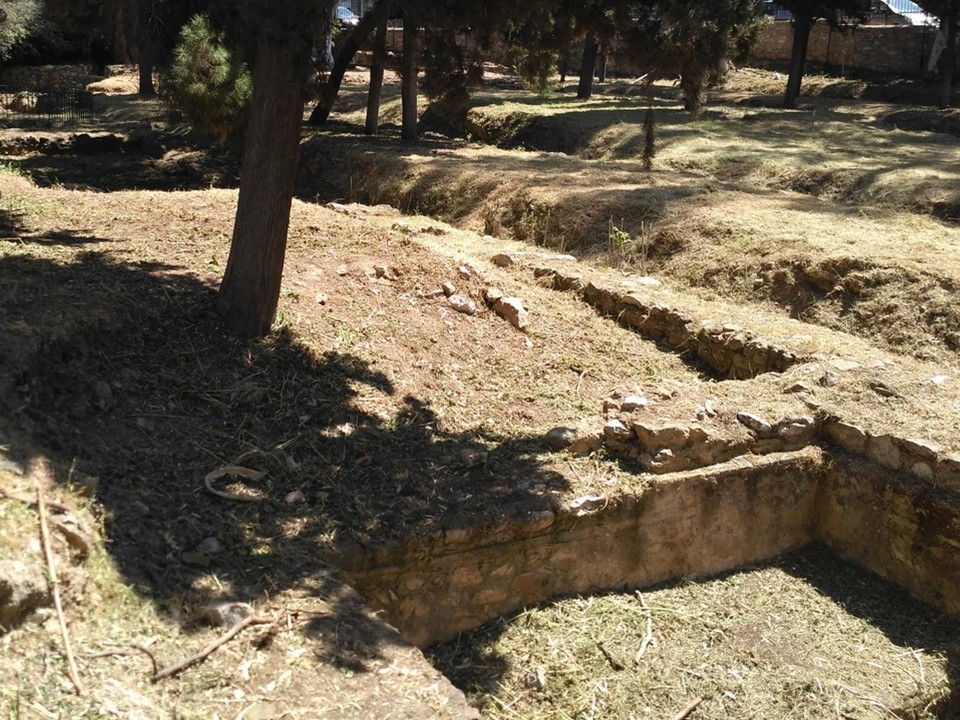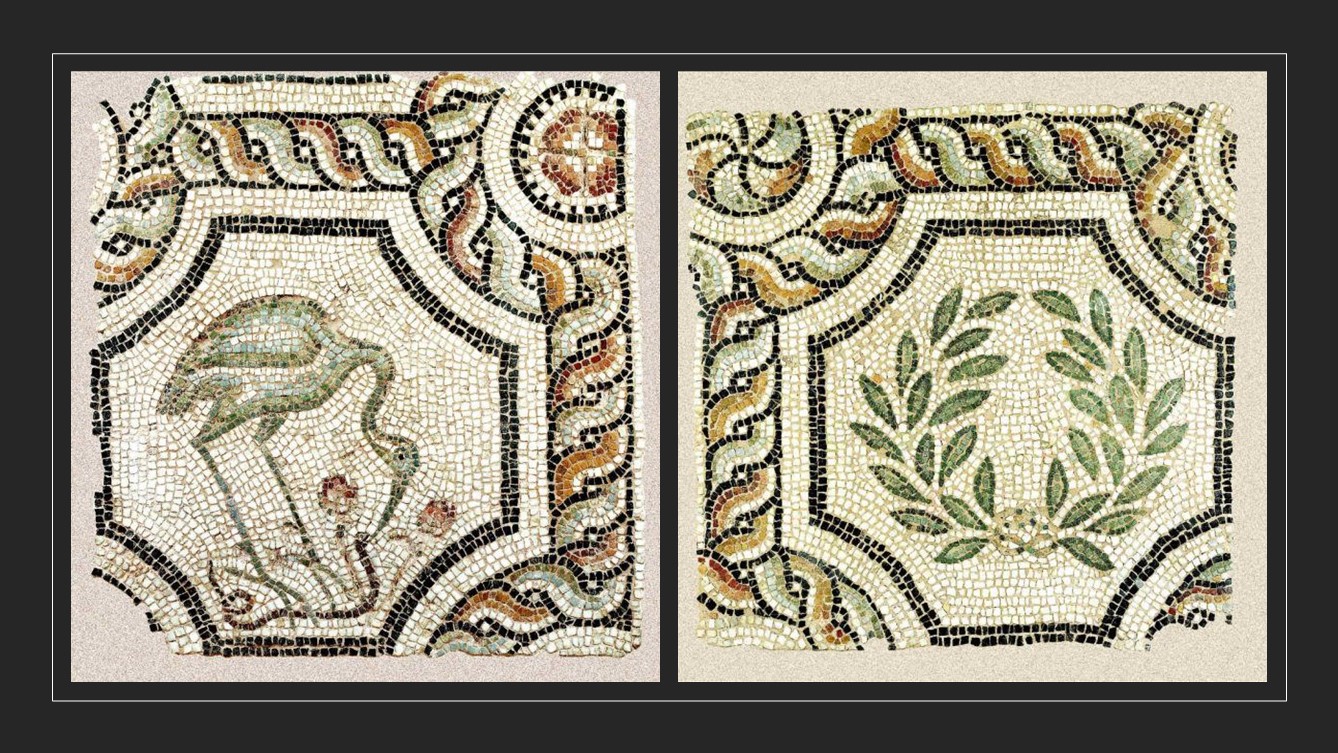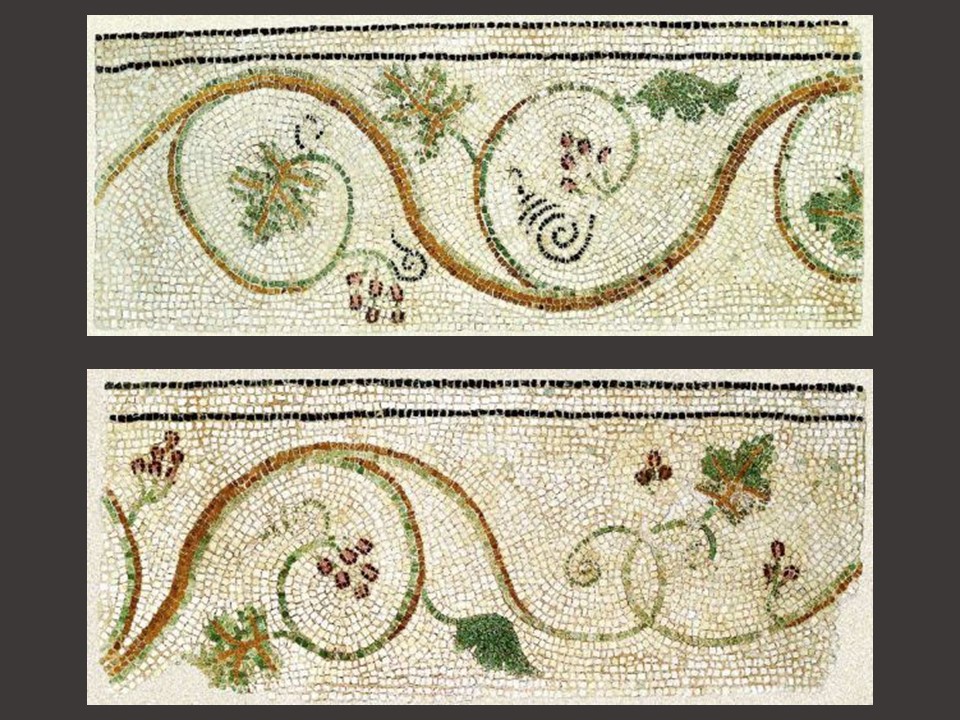
How do they call him, how do they call him / the river? / Ilissos, Ilissos. / Let me tell you my little secret. / I love you, I love you. / Babies yell at their mom, / but I am desolate and orphaned. / Birds fly with their wings, / but I fly in the dance. / How do they call him, how do they call him / the river? / Ilissos, Ilissos. / Let me tell you my little secret. / I love you, I love you… Back in the late 50’ Ilissos was popularly sung by everyone in Greece. With music by Manos Hadjidakis and Lyrics by George Emirzas, it was a musical hit that made the little river that crossed Athens, legendary… Very few, if any, of those who sang along Nana Mouskouri knew about the Byzantine Basilica, let alone, of the Mosaics from the Ilissos Basilica in Athens… https://midifiles.gr/lyrics/ilisos-nana-mushuri-giovana-1956/ and https://www.youtube.com/watch?v=0cDeEYeR_0k

Ilissos Basilica is one of the most important Early Christian monuments in the city of Athens… today, a “sad” archeological site, hardly anyone visits. Back in 1916 and 1917, George Sotiriou. a prominent scholar in the field of Christian Archaeology, excavated the area, discovered the Basilica and the lovely mosaics that are now exhibited in the Byzantine and Christian Museum in Athens. The Basilica was originally built on an islet in the middle of Ilissos river (the islet was known as Βατραχονήσι – Frog Island)… located to the east of the Olympieion, popularly called today, the Columns of the Olympian Zeus, a colossal Athenian Temple that started during the 6th century BC, at the time of the Athenian tyrants, and finished by the Roman Emperor Hadrian in the 2nd century AD, 638 years later. The fifth-century Basilica was dedicated to Saint Leonides, the third-century Bishop of Athens who was put to death along with seven female martyrs… in 250 AD during the persecutions of Decius.https://athensattica.com/things-to-see/ancient-sites/ilissos-basilica/ and http://www.byzantineathens.com/betaalphasigmaiotalambdaiotakappaeta-iotalambdaiotasigmasigmaomicronupsilon.html
The Ilissos Basilica was probably founded in the years 423-450 by the Byzantine Empress Athenais-Eudocia, wife of the Emperor Theodosius II and Sotiriou excavations of 1916/17 revealed a Basilica of the transitional type – from the simple, timber roofed to the domed basilica. Excavations also brought to light a crypte-martyrium, where Leonides’ relics were kept, and another edifice, a baptisterium, in all probability for the needs of the growing Christian group of Athenian citizens. The basilica, according to the experts, was very carefully built and richly decorated with marble walls, mosaics, and sculptures. This Early Christian monument of Ilissos properly fills the gap in the continuous artistic and cultural evolution of the city of Athens. https://www.archaeology.wiki/blog/issue/the-early-christian-basilica-of-ilissos/

Ilissos Basilica Mosaic depicting a Laurel Wreath, 5th century AD, Floor Mosaic, 98 x 97 cm, Byzantine and Christian Museum, Athens, Greece https://www.byzantinemuseum.gr/en/permanentexhibition/ancient_world_to_Byzantium/temples_of_the_new_religion/?bxm=1755
The group of mosaics, coming from the Ilissos Basilica and exhibited in the Byzantine and Christian Museum in Athens are of exceptional quality combining the best of Roman and Christian floor mosaic traditions. Inspired by the Roman tradition, the Ilissos Basilica mosaics show decorative features such as interlace in the form of chains (“guilloche”), stylized round flowers (rosettes), trailing ivy, motifs resembling fish scales and water birds. The Early Christian designs exhibited are vine scrolls from which hang bunches of grapes and vine leaves (symbol of the Christian Paradise), wreaths of laurel leaves (a well-known symbol of victory from Roman times), small crosses, and other geometrical and plant motifs. The 5th-century artist who designed these mosaics was a master colourist who favoured gentle hues of white, black, deep red, orange, grey, pale violet, brown, yellow, pink, blue and green. His drawing technique also showed an artist who liked discreet and charming lines, light touch, and great care in arranging the tesserae to follow the outlines. https://www.byzantinemuseum.gr/en/permanentexhibition/ancient_world_to_Byzantium/temples_of_the_new_religion/?bxm=1753
For a PowerPoint on the Mosaics from the Ilissos Basilica in Athens, please… Check HERE!

Part of a Mosaic pavement decorated with a winding stem with leaves and grapes, 5th century AD, Floor Mosaic, 63 x 147 cm, Byzantine and Christian Museum, Athens, Greece https://www.byzantinemuseum.gr/en/permanentexhibition/ancient_world_to_Byzantium/temples_of_the_new_religion/?bxm=1759